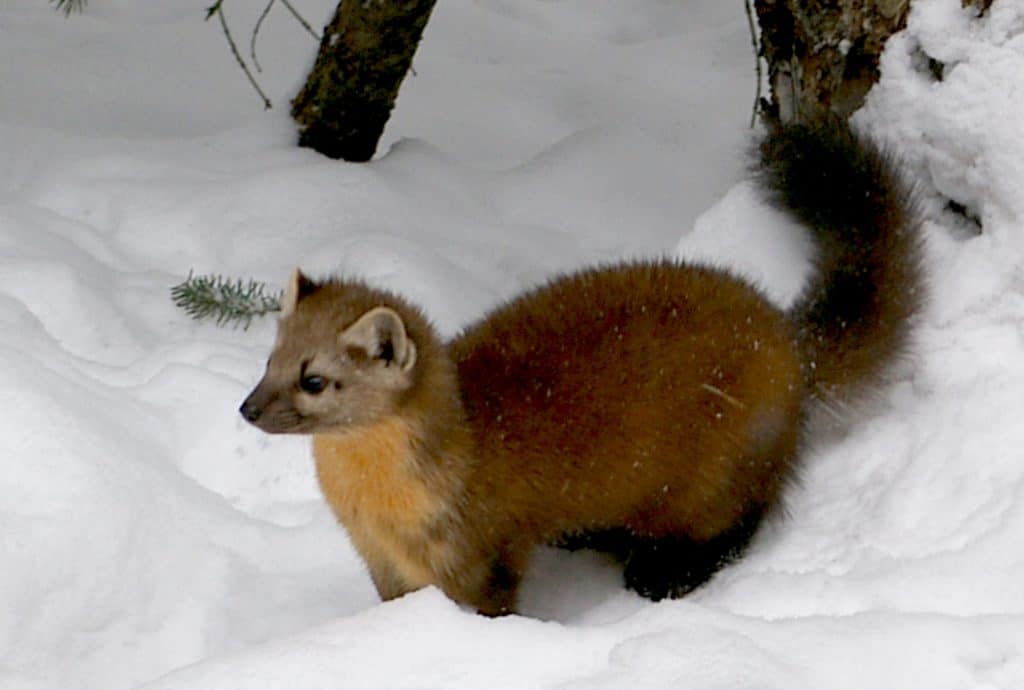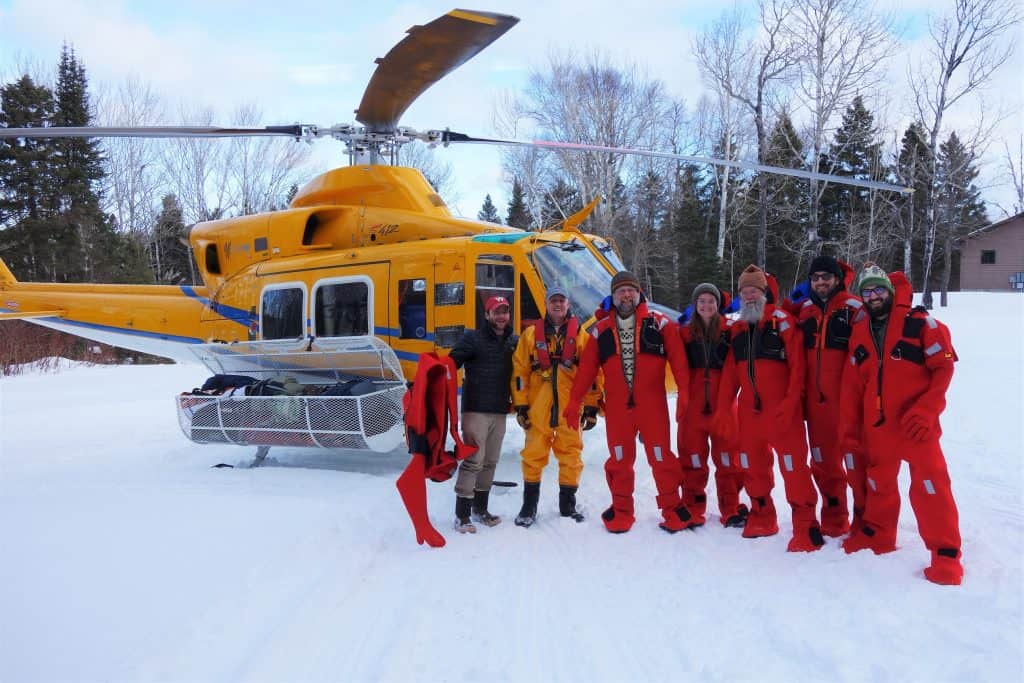
Wolves and moose are the most high-profile wildlife at Isle Royale National Park, with their predator-prey relationship and closely-connected populations, and the demise of wolves has caused considerable controversy about management. But other species are equally important to the diversity of the northern forest.
This month, biologists from the University of Wisconsin-Madison and National Park Service released new findings about the rise and fall and rise of another creature: the American marten (often called the Pine marten), a cat-sized member of the weasel family. Martens are found in conifer forests across Canada and parts of the United States. These carnivores primarily feed on voles, squirrels, hares, mice and shrews, and other small mammals. They have luxurious fur coats — which is why they were trapped out on Isle Royale by early European settlers, with the last one recorded in 1917. Seventy years later, people started seeing them again.
The marten’s return raised questions: Were they ever totally gone? Did a proposed reintroduction in the 1960s take place? Or did they repopulate the island somehow? The elusive creatures are notoriously difficult to study — mostly nocturnal, they spend much of the time in trees.
“I’ve never seen a Wisconsin marten without trapping one,” researcher Phil Manlick said.

To find answers, the scientists collected marten scat samples on the island over a five year period, as well as samples from Canada, Minnesota, Wisconsin and Michigan’s Upper Peninsula. They ultimately extracted DNA samples of 230 individuals animals.
By creating genetic “fingerprints” for marten populations in the various regions, they could compare Isle Royale’s animals to others.
Park management implications
This method indicated the animals most likely naturally returned to the island by walking 16 miles across the ice from Ontario one winter in the early 1990s.
The genetic record shows very low genetic diversity on Isle Royale — probably because it was recolonized a relatively few generations ago by one breeding pair, or even just a pregnant female. Yet, the DNA does not show the kind of unique genetic mutations that would indicate the animals are descendants of ancestors that had been isolated on the island for millennia.
The National Park Service proposed reintroducing martens to Isle Royale in 1966, but correspondence records indicate the effort was unsuccessful due to difficulty trapping sufficient numbers elsewhere. There is no documentation of any other attempts.
“If they naturally colonized the island, it has implications for the management of Isle Royale in general,” Dr. Jonathan Pauli, professor of forest and wildlife ecology at UW–Madison, said. “This does suggest that these islands are maybe not as insulated as we think, and that they are indeed way more dynamic than we give them credit for.”
The researchers also noted that the island could become more isolated due to climate change. Ice bridges, like those they believe the martens crossed, occur less often in a warming climate. Winters are warming in the Quetico-Superior region faster than any other season.
The marten research was supported by the National Park Service and conducted in partnership with the Grand Portage Band of Lake Superior Chippewa, with additional support from the American Society of Mammalogists and the National Science Foundation.
References
- Martens recolonized Isle Royale in the ’90s, showing island’s dynamism – University of Wisconsin, August 23, 2018
- Romanski, Mark & N. Pauli, Jonathan & Manlick, Philip. (2018). Dynamic colonization history in a rediscovered Isle Royale carnivore. Scientific Reports. 8. 10.1038/s41598-018-31130-0.
- History and status of American Marten Martes americana at Isle Royale National Park, Michigan, USA, M Romanski, J Belant – Small Carnivore Conservation, 2008

